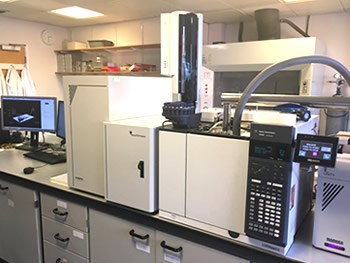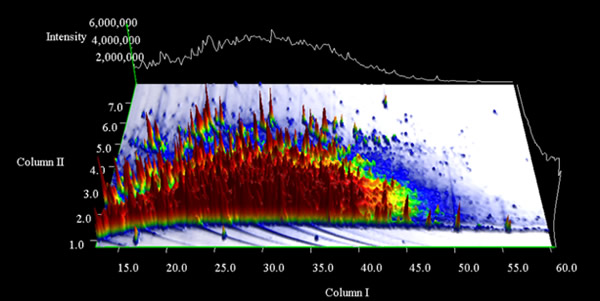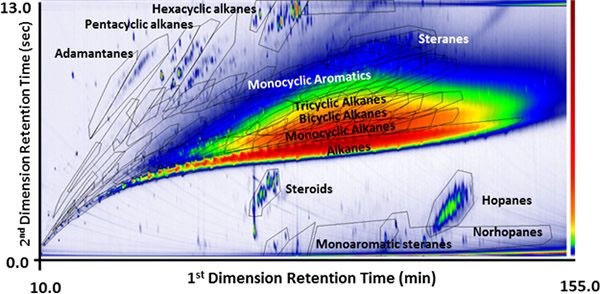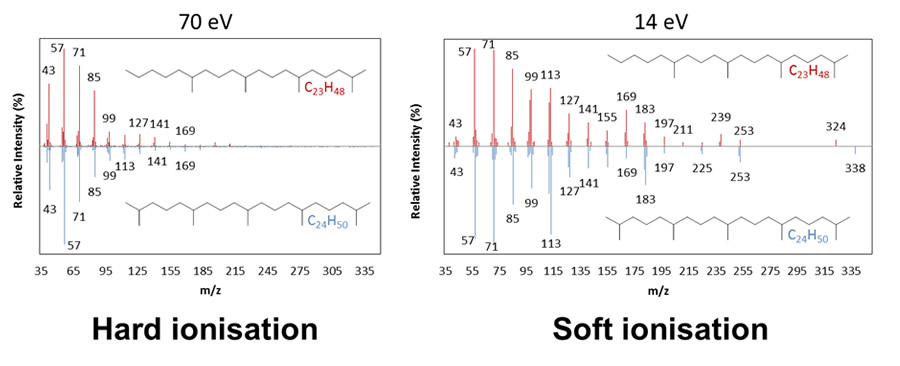Samples such as environmental, petrochemical, food, fragrance etc., can comprise of hundreds or thousands of organic compounds, which can be difficult to detect using conventional analytical techniques such as GC-MS.
The state-of-the-art comprehensive gas chromatography time of flight mass spectrometry (GCxGC-ToF-MS) technique has a huge power for separating complex mixtures, by employing two GC separating columns (usually non-polar and polar) connected in series through a modulator.1
For more information about this facility contact Dr Salim Alam (m.s.alam@bham.ac.uk).
 Figure 1. The GC×GC-ToF-MS instrument
Figure 1. The GC×GC-ToF-MS instrument

Figure 2. Schematic representation of the GCxGC-MS technique
Each peak in the chromatography signifies a compound and peaks with similar boiling points (separated by column 1) are not usually sufficiently separated with conventional 1D-GC. Using a second dimension of separation (column 2 – polarity), an increased separation can be achieved and allows the analysis of components that were previously difficult to separate in samples of complex mixtures, see Figure 3.
Conventional GC Trace

Figure 3. A 3D chromatogram of a gas-phase diesel engine exhaust emission sample. Each peak corresponds to a compound.2 Gas phase samples are injected into the GC×GC via thermal desorption.
GC×GC provides images (or chromatograms) that are arranged in specific patterns according to compound structure, which is extremely useful for grouping analyses of mixtures containing many components, see Figure 4.

Figure 4. GC×GC chromatogram that indicates the ordered nature of compounds being separated according to their structures. This sample is of a lubricating oil.3
Although GC×GC allows the separation of many compounds, identifying isomers using this technique can be troublesome without the use of a powerful detector. Our variable ionisation mass spectrometry detector allows for the identification of hundreds of compounds within complex matrices, including isomeric species.4 This is achieved by tuning the ionisation to soft (10eV) hard (70eV) electron impact energies within the mass spectrometer, in order to retain the molecular ion of the isomer of interest and allow to discriminate between similar structures of compounds, see Figure 5.

Figure 5. Mass spectra for C23 and C24 alkanes using hard and soft ionisation mass spectrometry
References
- M.S. Alam and R.M. Harrison. Recent advances in the application of 2-dimensional gas chromatography with soft ionisation and hard ionisation time-of-flight mass spectrometry in environmental analysis. Chemical Science 7, 3968-3977, 2016
- M.S. Alam, S. Z. Rezaei, C.P. Stark, Z. Liang, H. M. Xu and R.M. Harrison. The characterisation of diesel exhaust particles – composition, size distribution and partitioning. Faraday Discussions. 189, 69-84, 2016
- M.S. Alam, Z. Liang, S.Z. Rezaei, C.P. Stark, H.M. Xu, A.R. Mackenzie and R.M. Harrison. Mapping and quantifying isomer sets of hydrocarbons (≥C12) in environmental samples using GCxGC-ToFMS. Environmental Science & Technology, Submitted, 2017
- M.S. Alam, C. Stark and R.M. Harrison. Using variable ionisation energy time-of-flight mass spectrometry with comprehensive GCxGC to identify isomeric species. Analytical Chemistry. 88, 4211-4220, 2016